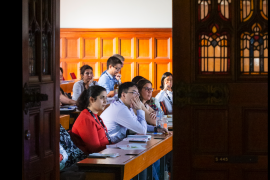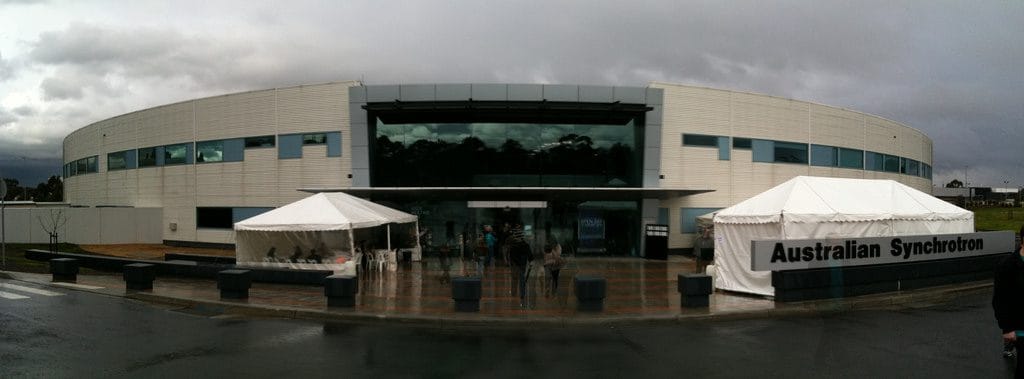Asynchronous learning has become a significant part of higher education today, especially post-pandemic. With the increasing demand for flexibility and convenience, students told us in a short survey in Semester 1 2023 that they expect the option to engage in their studies at their own pace, in their chosen space. However, they also told us that they expect to feel part of a learning community and to engage in meaningful interaction within these asynchronous environments.
[I want] flexibility but still [the] ability to make meaningful engagement with other students.
Asynchronous student, Postgraduate public health program, 2023
The problem, however, is that “async is hard.” We know that students want interaction, but how do we deliver it effectively?
This article was contributed by James Kite, Silvia Choi, and Philayrath Phongsavan.
What is asynchronous interaction (and how do we make it good)?
At the recent 2023 Sydney Teaching Symposium, we gathered with around 70 colleagues from across the University to explore this issue. The workshop focused on two essential questions:
- What constitutes ‘interaction’ in asynchronous environments, and
- How can we foster ‘good’ asynchronous interaction?
Below, we have summarised the key ideas and themes that we identified from the workshop, helping us as educators to enrich the asynchronous learning experience for our students:

- Stimulating content: Participants believed that the foundation of successful interaction lies in stimulating content that engages students through high-quality, interesting, fun, authentic, and challenging learning activities. When students find the content appealing, they are more likely to delve deeper, share their thoughts, and interact with their peers and instructors.
- Co-creation of knowledge: There was a strong sense that interaction stems from building a student network. Encouraging students to co-create knowledge fosters a sense of ownership and engagement. Allowing them to share their perspectives on the learning materials and exposing them to the ideas of others enriches the learning experience. This collaborative approach not only enhances interaction but also promotes critical thinking and deeper learning.
- Visible teacher presence: Participants highlighted how important it was for students to feel connected to and supported by their teachers. Existing evidence shows that asynchronous students often feel less respected and less satisfied with their learning, but also that a strong teacher presence can minimise or remove these feelings. When students know that their instructors are present and caring, they are more likely to engage actively in the learning process.
- Student agency: A few participants commented that listening to our students’ voices and actively seeking their views on asynchronous learning is vital for creating good interaction. By understanding their preferences and needs, we can tailor the learning environment to suit them better. Student agency empowers learners, making them feel valued and respected, and results in a more positive and engaging experience for everyone involved.
Teacher needs to put in effort too! [It’s] not set and forget.
Workshop participant, 2023
So, the question we now face is: how can we translate these valuable insights gained from the workshop into actionable steps that educators can implement when designing effective asynchronous learning environments?
Designing effective asynchronous learning environments
While students and teachers have described asynchronous learning as inferior to ‘live’ learning, the workshop discussions highlighted a desire many educators have to change this narrative and turn asynchronous learning experiences into something that is satisfying and effective for teachers and students alike. Not only this, we have lots of ideas about how this can be achieved. This aligns with evidence that shows that asynchronous learning, when done well, can be as effective as face-to-face learning in terms of academic performance and student satisfaction.
Here are some tips you can consider when designing your asynchronous learning environments:
- Help your learners feel included: the key to success lies in creating an inclusive and interactive learning community in your asynchronous environment. Use universal design for learning principles to help guide the design of your units and programs so that all students can feel part of the learning community. For example, offer choices in how students can meet the learning objectives, such as providing learning tasks with varying levels of difficulty.
- Create opportunities for interaction and co-creation: Interaction is driven by stimulating content and active engagement. Try to avoid using Canvas and other online tools as a dumping ground for passive information and remember that interaction can be with the learning activities, not just with other people. You might, for example, use H5P to spice up pre-recorded lectures by including activities like crosswords, timelines, and interactive quizzes. Talk to the education designers across the University to get support to deliver high-quality content in asynchronous environments. There are a whole host of tools and platforms you can use to generate different types of interaction – Padlet, Mentimeter, SRES, quizzes, Miro, shared documents (e.g. Google docs), interactive videos, and, of course, discussion boards, just to name a few. These all have advantages and disadvantages so it’s important to pick the right tool for the kind of interaction you want. You might also try following the principles of Students as Partners and engaging students in curriculum design.
- Don’t underestimate the power of teacher presence: teachers play a crucial role in facilitating interaction by being present, supportive, and approachable. Creating a visible teacher presence involves supporting students through clear task guidance, providing timely feedback, initiating informal conversations, and acting as role models. For example, we have found that it is important to include a mixture of general responses to the whole group and direct responses to individual students when using tools like discussion boards or Padlets.
- Seek feedback from your students (often) and act on it: How can you actively involve students in shaping the learning environment? Don’t wait for the USS results; seek out student feedback on your learning activities during the semester. Let students know when you are trying something new or different and give them opportunities to provide you with feedback, like using critical incident questionnaires after a learning activity. Respond publicly to the feedback you receive, too; for example, post a weekly or fortnightly podcast-like response on Canvas. Even when students don’t like the learning activity, they will still feel valued and part of the community if they feel they have been listened to.
Finding the right blend of flexibility and community-building in asynchronous learning environments is a goal we all continue to work towards. Every step, no matter how small, can lead to more enriching and inclusive learning experiences for our students. Let’s keep the dialogue open, sharing insights and evolving our methods to cater to the dynamic needs of our students. Together, we can transform asynchronous learning into a truly empowering and rewarding educational tool.





